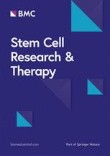
Bone Marrow Buffy Coat vs B-tricalcium Phosphate Granules for Avascular Necrosis of the Femoral Head

Bone Marrow Buffy Coat vs B-tricalcium Phosphate Granules for Avascular Necrosis of the Femoral Head
Combining autologous bone marrow buffy coat and angioconductive bioceramic rod grafting with advanced core decompression improves short-term outcomes in early avascular necrosis of the femoral head: a prospective, randomized, comparative study
Stem Cell Res Ther. 2021 Jun 19;12(1): 354.Did you know you're eligible to earn 0.5 CME credits for reading this report? Click Here
Synopsis
Forty-four patients (57 hips) with avascular necrosis of the femoral head were randomized to receive hip preservation surgery with advanced core decompression and angioconductive bioceramic rod grafting plus either bone marrow aspirated buffy coat (n=18; 24 hips) or beta-tricalcium phosphate granules (n=26; 33 hips). The primary outcome of interest was Harris Hip Scores (HHS) after surgery. The se...
To view the full content, login to your account,
or start your 30-day FREE Trial today.
FREE TRIAL
LOGIN
Forgot Password?
Explore some of our unlocked ACE Reports below!

Learn about our AI Driven
High Impact Search Feature
Our AI driven High Impact metric calculates the impact an article will have by considering both the publishing journal and the content of the article itself. Built using the latest advances in natural language processing, OE High Impact predicts an article’s future number of citations better than impact factor alone.
Continue



 LOGIN
LOGIN

Join the Conversation
Please Login or Join to leave comments.